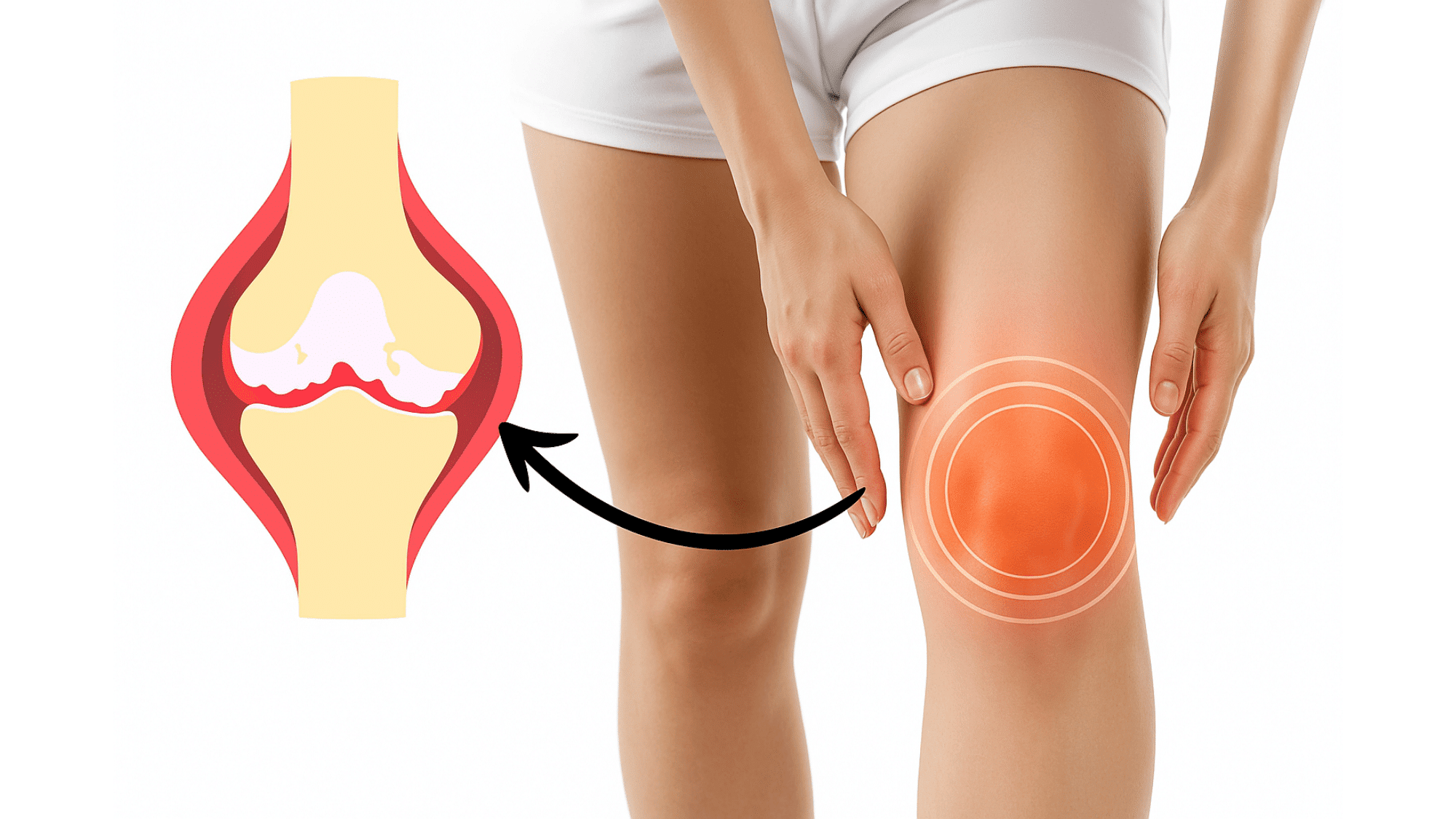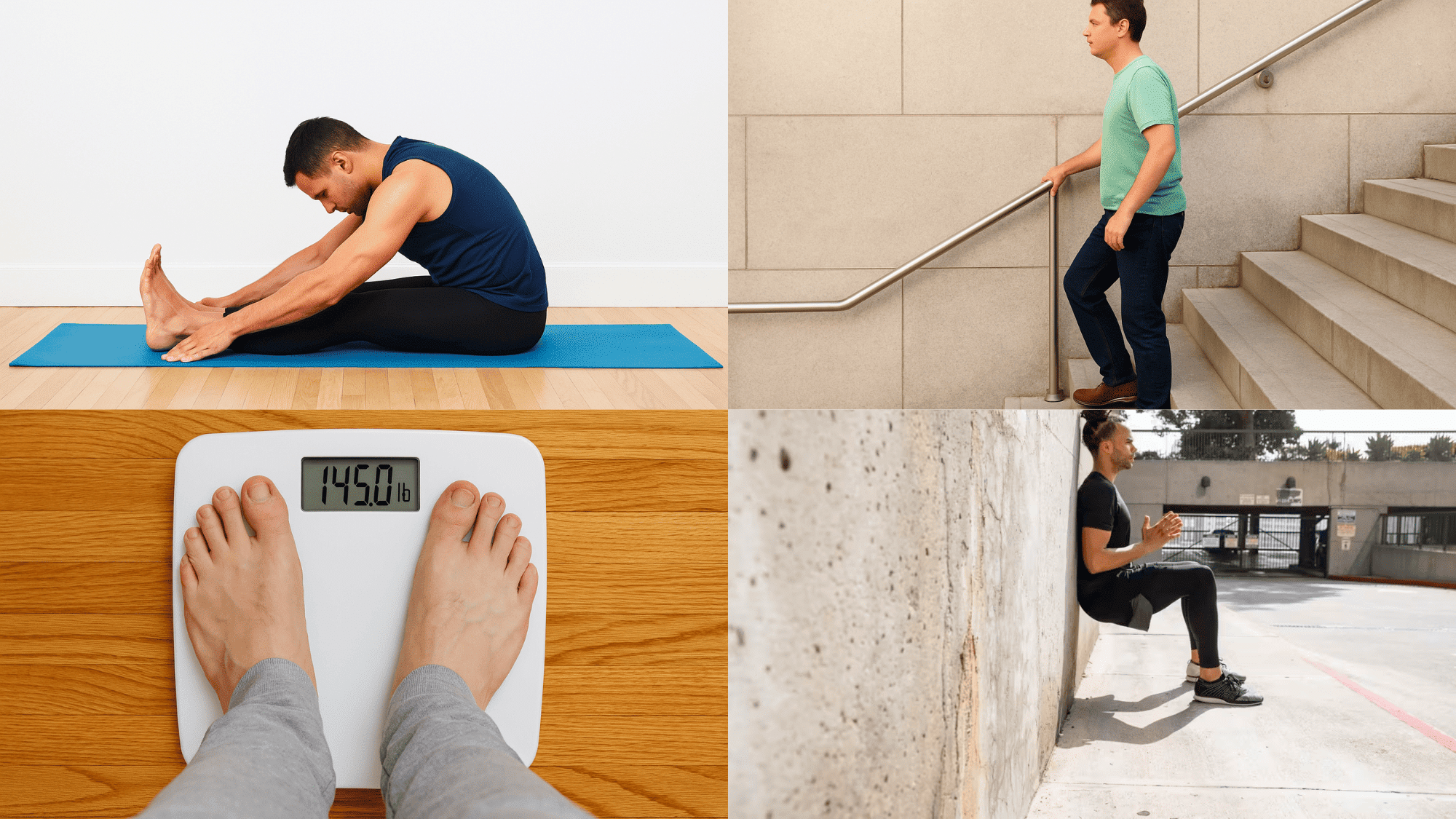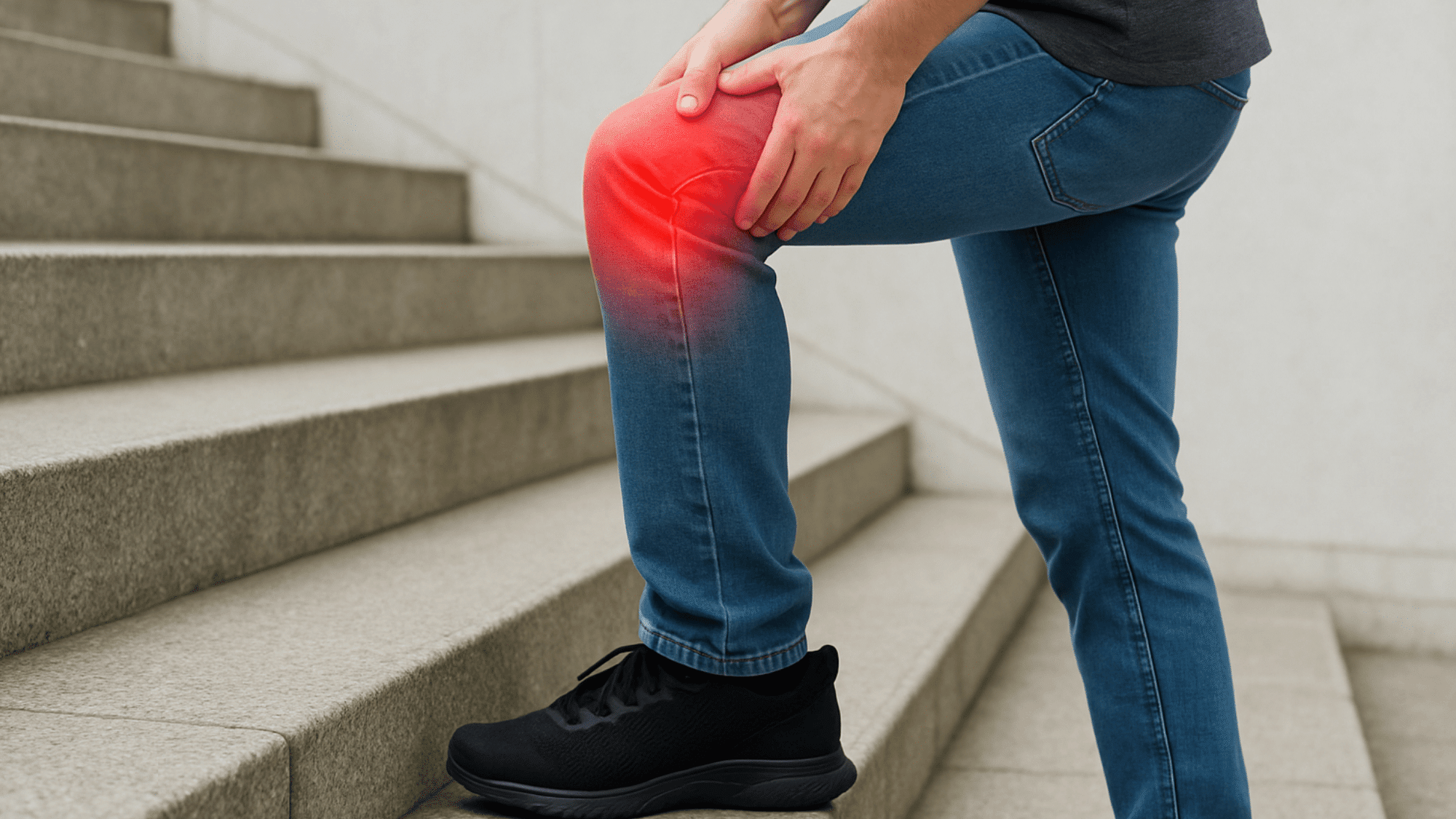I know how frustrating it can feel when your knee hurts going up stairs. Walking on flat ground might be fine, but the moment you climb a step, there’s that sharp or nagging pain.
You’re not alone; many people deal with knee pain when climbing stairs, and it often leaves us wondering what’s really going on inside our knees.
The truth is, stairs put extra pressure on the joint, which makes hidden problems more apparent. In this blog,
I’ll walk you through the reasons behind knee pain when going up stairs, what symptoms to watch for, and practical tips you can try at home. By the end, you’ll know when it’s a simple fix and when to see a doctor.
Why Stairs Trigger Knee Pain?
You might notice that your knees feel fine on flat ground, but ache the moment you climb stairs. That’s because stairs put your joints under extra stress.
When you step up, your knees bend more deeply, and the kneecap presses harder against the thigh bone. This extra pressure can highlight small issues that you may not notice during normal walking.
Here’s why pain often shows up on stairs:
-
Higher joint pressure: Climbing stairs puts 3–4 times more load on the knee compared to flat walking.
-
Kneecap movement: The kneecap glides forcefully over the thigh bone, which can irritate sensitive tissue.
-
Muscle weakness: Weak thigh or hip muscles make the knees work harder with each step.
Most Common Causes of Knee Pain Going Up Stairs

Knee pain when climbing stairs can come from different conditions. Some are due to wear and tear, while others are caused by injuries or muscle problems. Here are the most common reasons:
1. Osteoarthritis
Osteoarthritis is the natural “wear and tear” of the knee joint. Over time, cartilage that cushions the bones thins out, causing stiffness and discomfort.
Since climbing stairs adds more pressure, pain often feels worse when going up or down. It’s most common in older adults but can affect anyone with long-term joint stress.
Symptoms:
- Stiffness after sitting or resting.
- Aching pain during stair use.
- Swelling or tenderness around the joint.
2. Patellofemoral Pain Syndrome (Runner’s Knee)
This condition happens when the kneecap doesn’t move smoothly in its groove. The uneven tracking causes friction and pain at the front of the knee.
Stairs make this worse because the kneecap is pressed harder against the thigh bone during bending. It’s common in athletes and people who do repetitive knee-bending activities.
Symptoms:
- Pain at the front of the knee.
- Grinding or popping sounds when bending.
- Pain that worsens with stairs, squatting, or sitting for long periods.
3. Meniscus Tear
The meniscus is the cartilage that cushions your knee. A sudden twist, squat, or repetitive strain can cause it to tear.
A tear disrupts smooth knee movement, leading to sharp pain during activities like climbing stairs. Without treatment, the injury may limit flexibility and cause long-term joint issues.
Symptoms:
- Sharp or stabbing knee pain.
- Swelling soon after injury.
- Clicking or locking sensation.
- Pain that worsens when climbing stairs.
4. Ligament Injuries
Ligaments like the ACL and MCL stabilize your knee. A strain or tear from sports, sudden movement, or impact can make the joint unstable.
Climbing stairs puts extra stress on damaged ligaments, causing soreness and instability. These injuries range from mild sprains to severe tears that require medical care.
Symptoms:
- Sudden pain after injury.
- Instability or “giving way” on stairs.
- Swelling around the joint.
- Trouble bearing weight on the knee..
5. Tendinitis
Tendinitis is inflammation of the tendons that connect muscle to bone. In the knee, it’s often linked to overuse, repetitive stair climbing, or sports.
The irritation makes the tendons sore and stiff, especially when bending deeply. Pain usually starts mild but worsens if the activity continues without rest.
Symptoms:
- Dull ache in front of the knee.
- Pain that worsens with climbing or squatting.
- Tenderness around the kneecap.
- Stiffness after activity.
6. Muscle Imbalance
When thigh, hip, or glute muscles are weak or tight, the knee absorbs more strain than it should. Poor muscle support alters movement patterns, causing excessive stress on the joint during stair climbing.
Strengthening and stretching these muscles can often reduce discomfort and prevent future issues.
Symptoms:
- Knee soreness after physical activity.
- Pain mainly occurs when climbing stairs or hills.
- Feeling of weakness in the legs.
- Occasional knee fatigue or instability.
How to Tell What’s Causing Your Knee Pain?
It’s not always easy to know why your knee hurts when going up stairs, since several conditions share similar signs. Paying attention to the type of pain and when it shows up can give important clues:
- Pain in Front of the Knee: Often linked to patellofemoral pain syndrome (runner’s knee) or tendinitis.
- Sharp, Sudden Pain With Clicking or Locking: May point to a meniscus tear.
- Stiffness and Aching that Builds Over Time: Common with osteoarthritis.
- Instability or Giving Way: Can be a sign of ligament injury.
Home Remedies & Lifestyle Adjustments

Making small lifestyle changes can ease knee pain and protect your joints. These home remedies are simple, effective, and easy to add to your routine.
1. Warm-Up and Stretching
A short warm-up before climbing stairs helps prepare your muscles and joints. Gentle stretches for the hamstrings, quads, and calves improve flexibility, making movement smoother.
This reduces sudden strain on the knee and lowers the chance of irritation. Just a few minutes of stretching daily can make a big difference.
2. Strengthening Exercises
Simple exercises like step-ups, wall sits, or mini squats can build stronger quads, glutes, and hamstrings. Strong muscles act like shock absorbers, reducing stress on the knee joint.
Even doing these a few times a week can ease discomfort while climbing stairs and help protect your knees from future problems.
3. Weight Management
Extra body weight places added pressure on your knees, especially when going upstairs. Maintaining a healthy weight lightens the load and decreases wear and tear on the joint.
Even small, gradual changes in weight can lead to big improvements in knee comfort and overall mobility during everyday activities.
4. Using Support
Making small adjustments, like holding onto a railing or placing your whole foot on each step, can help take pressure off sore knees.
Supportive footwear with cushioning also makes stair use easier. These changes don’t treat the root cause but provide practical relief for everyday comfort and safety.
Treatment Options
If pain persists despite lifestyle changes, treatment options can help. From simple rest to medical care, here are the best ways to manage knee pain.
1. Rest and Short-Term Relief
Taking a break from stair use and applying the RICE method (rest, ice, compression, elevation) can reduce pain and swelling. Over-the-counter medications like ibuprofen or acetaminophen may also provide quick relief.
2. Physical Therapy and Exercise
Targeted strengthening of the quads, hamstrings, and glutes helps support the knee. Stretching routines improve flexibility and reduce joint stress. Physical therapy often teaches safe stair techniques.
3. Supportive Tools
Knee braces, supportive footwear, and using railings can take pressure off your knees while climbing stairs. These simple aids help with daily comfort.
4. Medical Treatments
If home care isn’t enough, a doctor may suggest cortisone or hyaluronic acid injections. In severe cases, surgery may be needed for ligament tears, meniscus injuries, or advanced arthritis.
While these patterns help narrow it down, only a medical professional can confirm the exact cause.
Diagnosis & When to See a Doctor
If knee pain only appears on stairs, you may wonder whether it’s worth getting checked. The truth is, understanding the root cause is the first step to proper treatment.
Doctors use a mix of history, physical exams, and imaging tests to figure out what’s really going on inside your knee.
| Step | What It Involves | Why It Matters |
|---|---|---|
| Medical history | Questions about when the pain started, activities that make it worse, and past injuries. | Helps rule out common triggers like overuse or sports injuries. |
| Physical exam | Testing knee movement, strength, and stability. | Identifies weakness, instability, or areas of tenderness. |
| Imaging tests | X-rays, MRI, or ultrasound if needed. | Confirms conditions like arthritis, ligament tears, or meniscus damage. |
If pain keeps coming back, worsens over time, or is paired with swelling, locking, or sudden instability, it’s best to see a doctor. Early diagnosis makes treatment easier and helps prevent long-term joint problems.
At the End
Living with knee pain when climbing stairs can feel discouraging, but it doesn’t have to control your daily life.
Small steps, such as strengthening your legs, wearing supportive shoes, or adjusting your climbing technique, can help ease the strain.
If the pain doesn’t improve or starts to limit your activities, reaching out to a doctor is the smartest move.
Remember, your knees carry you through so much each day; they deserve care and attention. With the right approach, you can stay active and protect your joints for the long run.
Have you tried any home remedies for knee pain? Which ones worked best for you? Share your experience in the comments. I’d love to hear what helped you!





